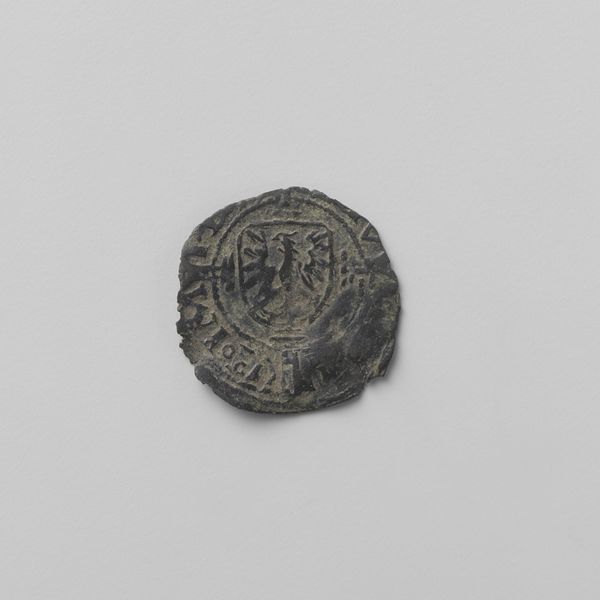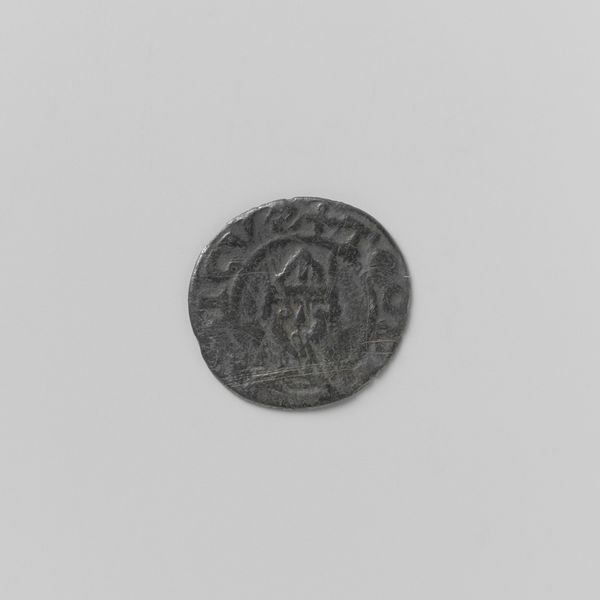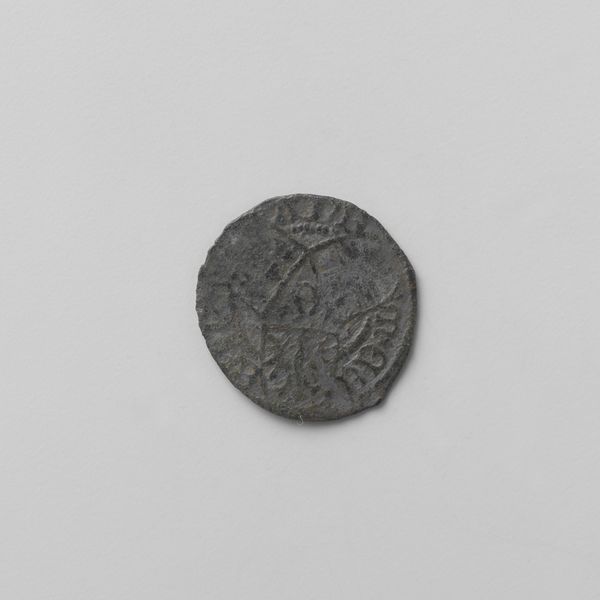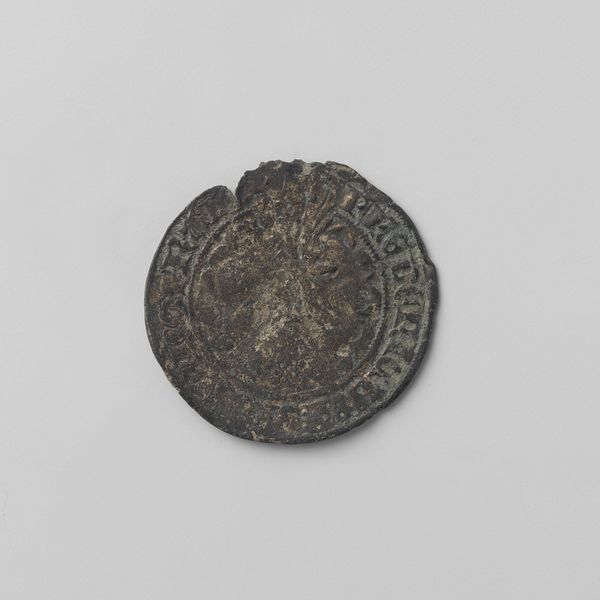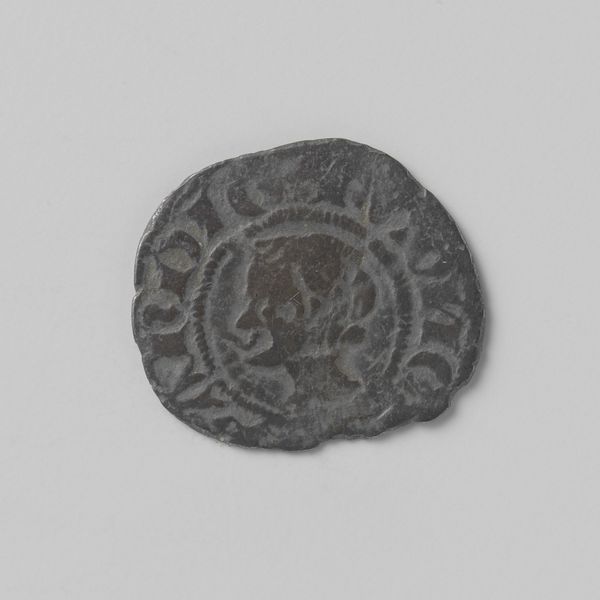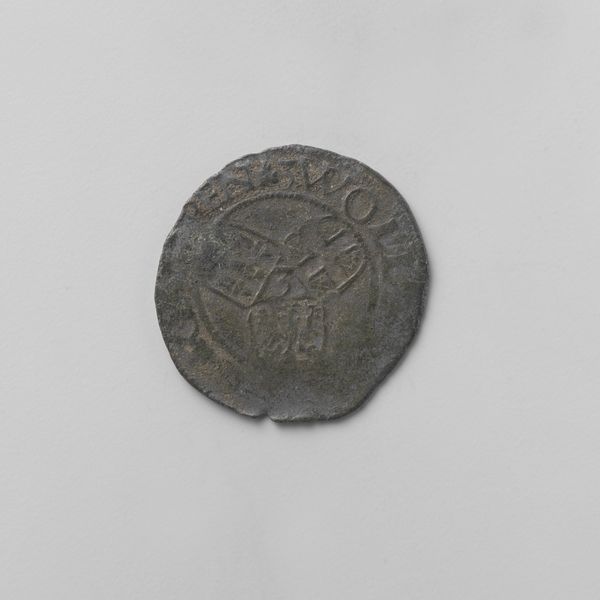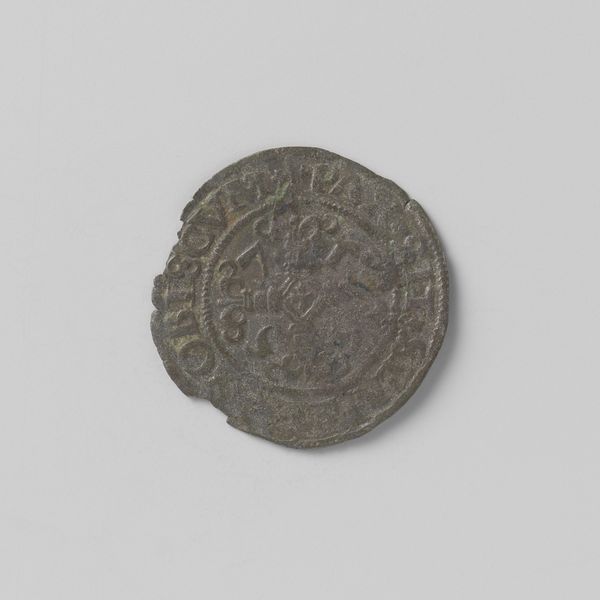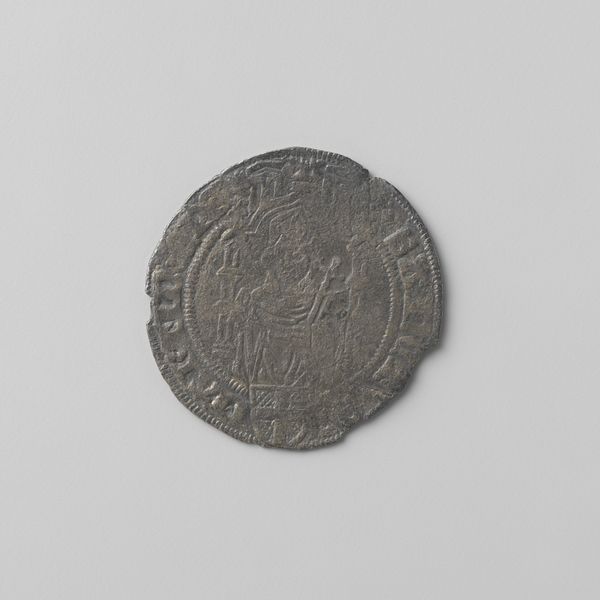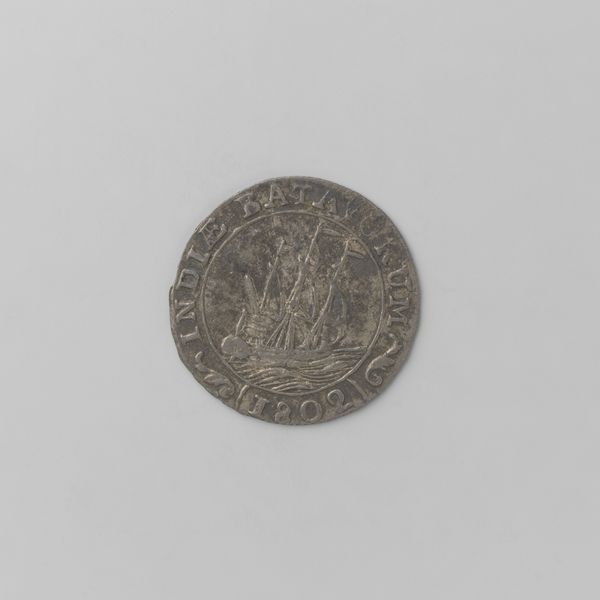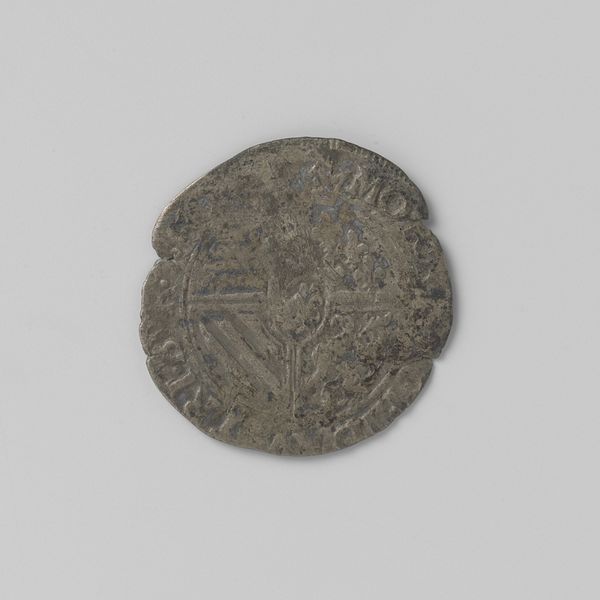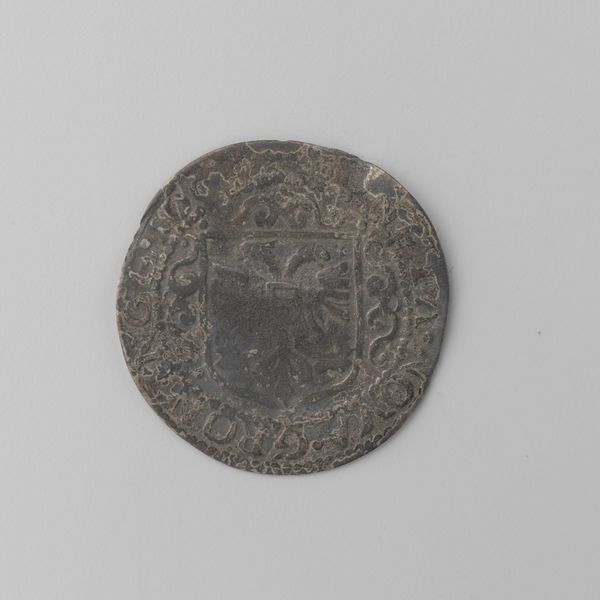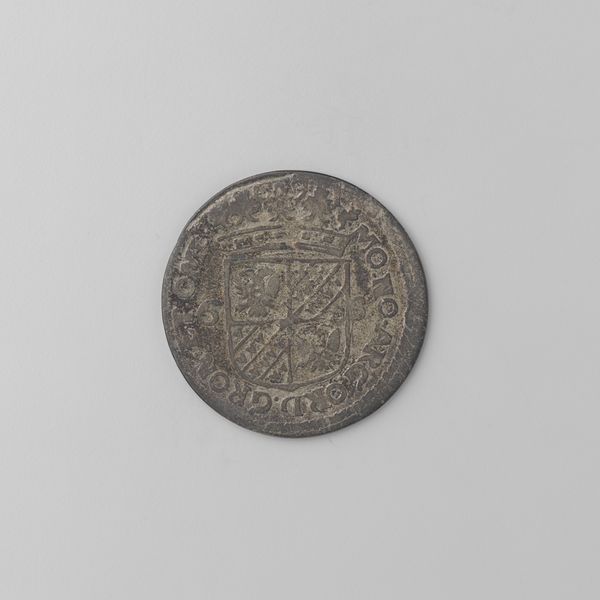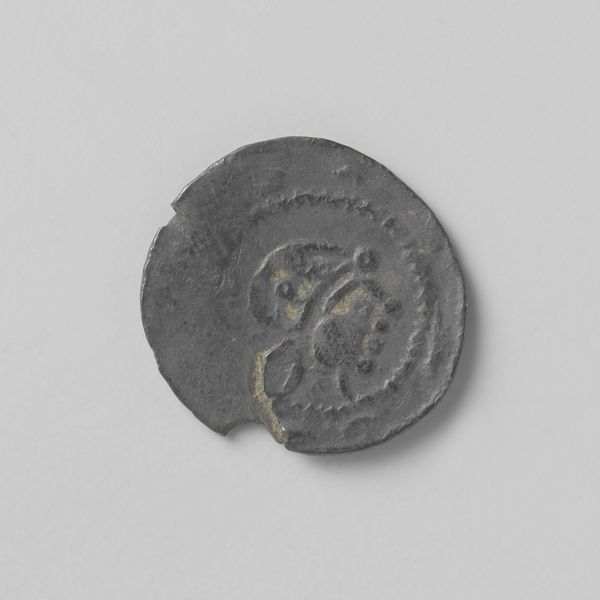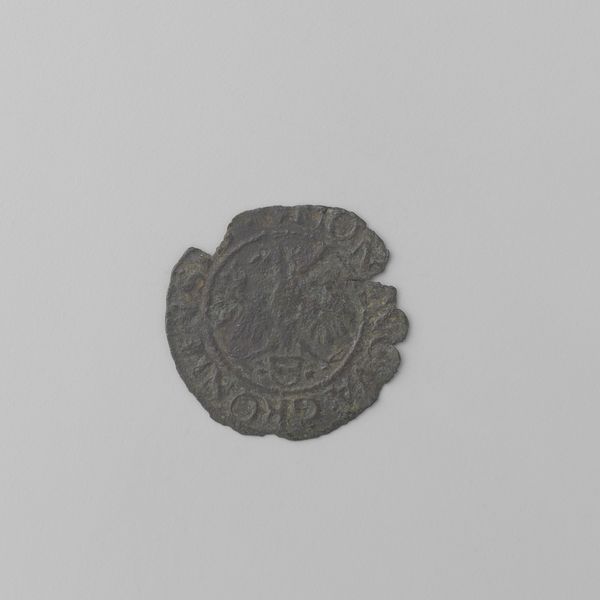
metal, engraving
#
portrait
#
medieval
#
metal
#
ancient-mediterranean
#
coin
#
engraving
#
miniature
Dimensions: diameter 1.5 cm, weight 0.55 gr
Copyright: Rijks Museum: Open Domain
Curator: Here we have a “Utrechtse kwart groot van Jan van Arkel,” dating from 1341 to 1364. It's an engraving on metal. Editor: My first impression? It looks worn, almost ghostly. A tiny fragment speaking of larger, perhaps troubled, historical narratives. Curator: Absolutely. This coin wasn't just money; it was a symbol of power, specifically, the power of Jan van Arkel, Bishop of Utrecht. Think about the church's socio-political authority during that period. Editor: And the engraving itself? It’s stylized, not realistic. I see it as a deliberate attempt to create a persona, to control the bishop’s image and how his authority was perceived. Is that a mitre I see topping two figures' heads? The detail, despite the coin's degradation, still stands out. Curator: Yes, those are definitely mitres. The imagery refers to the collegiate church, or chapter, over which Jan Van Arkel presided, while hinting at the overall influence wielded through religion. The coin acted as propaganda but also circulated wealth among social classes and groups. It played a role in both ideological control and practical economic systems. Editor: Considering the context, does the damage to the coin carry its own weight? It's not just an aesthetic detail; it's evidence of usage, of being handled, circulated, perhaps hoarded or even buried amid conflict. I mean, this wasn't simply displayed; it was part of someone's everyday life, right? Its battered quality creates empathy between modern onlookers and a faceless medieval consumer. Curator: Precisely. The coin bears a legacy of its own interaction within society and economy, well outside the intentions of Jan van Arkel. That interplay shows the broader history. Editor: It prompts thinking about value, doesn't it? Monetary, symbolic, and now historical. Even its imperfections narrate power, privilege, faith, but also economic disparities during the medieval period. This wasn't just currency; it’s a pocket-sized history lesson about church power and social systems. Curator: Exactly. These objects reveal connections, whether of state power or day-to-day lives. Examining those links expands art historical narratives. Editor: I'll definitely view medieval coins differently from now on. I guess every object carries more stories and intersecting meanings than initially appear.
Comments
No comments
Be the first to comment and join the conversation on the ultimate creative platform.
